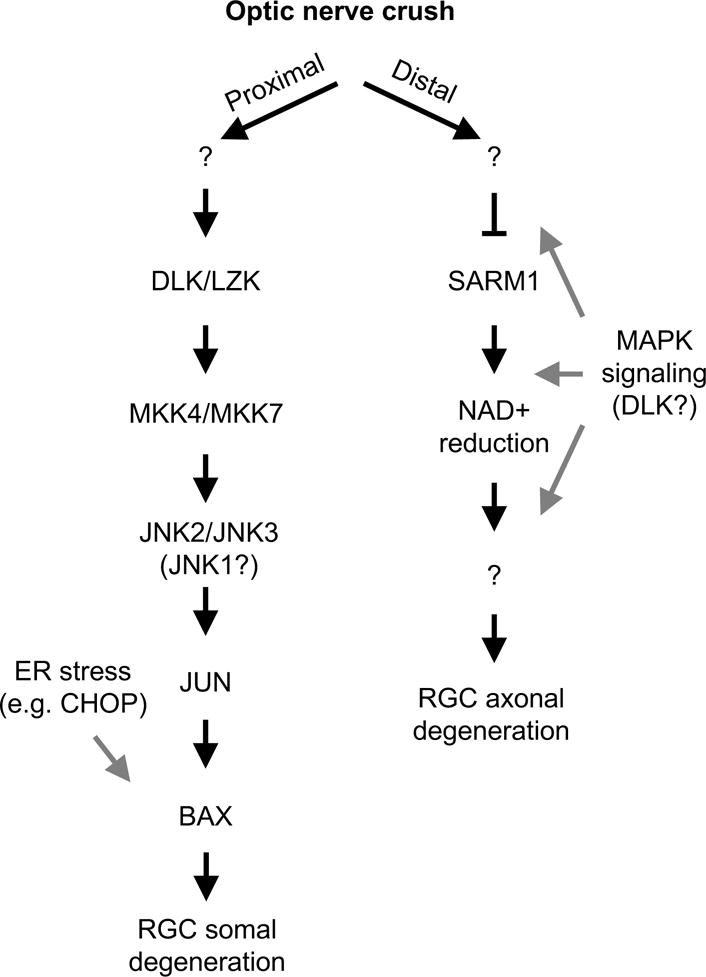Figure 7. Summary diagram of somal and axonal degeneration pathways controlling RGC somal and axonal degeneration after mechanical optic nerve injury.

After mechanical optic nerve injury (ONC) distinct injury signaling pathways appear to control somal (proximal to the site of injury) and axonal (distal to the site of injury) degeneration. Proximal to the site of injury a MAPK pathway that includes DLK/LZK and JNK2/3 activation activates the transcription factor JUN. JUN activation, presumably through altering the transcription of injured RGCs, leads to BAX activation and somal apoptosis. Also, an ER stress pathway and other factors have been shown to regulate RGC death after axonal injury. Axonal degeneration distal to the site of axonal injury is less well defined. After ONC injury, SARM1 deficiency lessons axonal degeneration; thus, the presence of SARM1 facilitates axonal degeneration presumably by consuming NAD+. The MAPK pathway, particularly the MAP2Ks (MKK4 and MKK7) and DLK have also been implicated in axonal degeneration. It is unclear (gray arrows) how important these molecules are for axonal degeneration in RGCs and whether they are upstream or downstream of SARM1 dependent events. “?” represents a presumed step(s) in the pathway that involve an unknown molecule(s).
